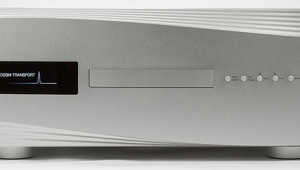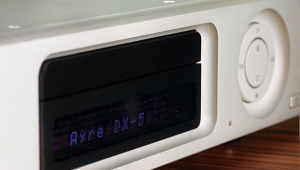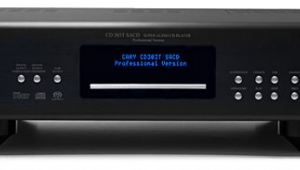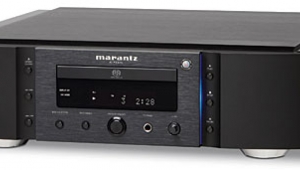| Columns Retired Columns & Blogs |
Nagra D open-reel digital recorder Measurements
Sidebar 2: Measurements
The D's analog line input impedance measured 9.2k ohms at 1kHz; the analog output impedance was 87 ohms at the same frequency. With the inner Fade pot at its calibration point and the outer sensitivity pot at "0dB," 100mV in at 1kHz corresponded to -21dBFS on the modulometer; 1V just lit the overload LED at an indicated -1dBFS.
Fig.1 shows the line analog input/analog output frequency responses at an indicated -2dBFS with the front-panel control set to "Flat," "LFA," and "Speech," and the sampling frequency set to 44.1kHz. The sharp rolloff above 20kHz is due to the ADC's anti-aliasing filter. The rolloff in the bass depends on the EQ setting: Flat gives a response down by 3dB at 24Hz; LFA shelves down the midrange by 3-4dB; while as expected, Speech drastically rolls off the low frequencies.

Fig.1 Nagra-D, frequency response with EQ set to Flat (top at 20Hz), LFA (middle), and Speech (bottom), analog input/analog output (5dB/vertical div.).
The Nagra-D's channel separation is specified at 80dB. Fig.2 shows that the crosstalk from Channel 1 to Channels 2, 3, and 4 (measured from analog input to analog output) remains below -90dB below 2kHz and only increases between Channels 1 and 2 above that frequency, due to capacitive coupling. Even in the worst case, however, separation is to specification.

Fig.2 Nagra-D, crosstalk from top to bottom at 20kHz: Channel 1 to Channel 2, Channel 1 to Channels 3 & 4, analog input at -2dBFS/analog output (10dB/vertical div.).
Looking at just the ADC performance, fig.3 shows the audioband spectrum of the digital data produced when the line input was fed a 1kHz signal with the generator level and the Nagra-D's Fade and Sensitivity controls set to produce a level just below the -1dBFS overload point. The harmonic content is mainly the second at -88dB, and the third at -110dB. The overall noise components lie around the -130dBFS level, implying an ADC resolution [better than 16 bits]. However, to assess the true resolution, the exact settings of the Fade and Sensitivity controls are critical; it's possible that the Nagra-D's real noise-floor is even lower than that measured here. Certainly the ADC linearity (not shown) was excellent down to well below -100dBFS.—John Atkinson

Fig.3 Nagra-D, spectrum of 1kHz tone recorded at -1dBFS just below ADC overload DC-22kHz, analog input/digital output (linear frequency scale, 20dB/vertical div.).
- Log in or register to post comments




































